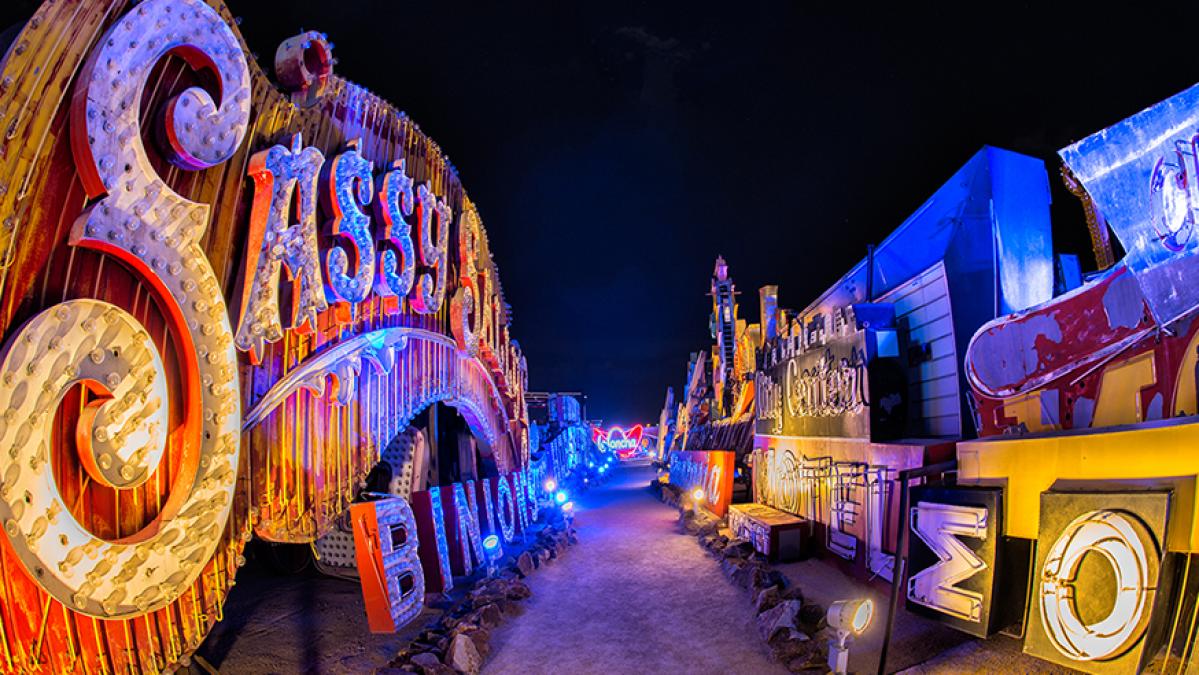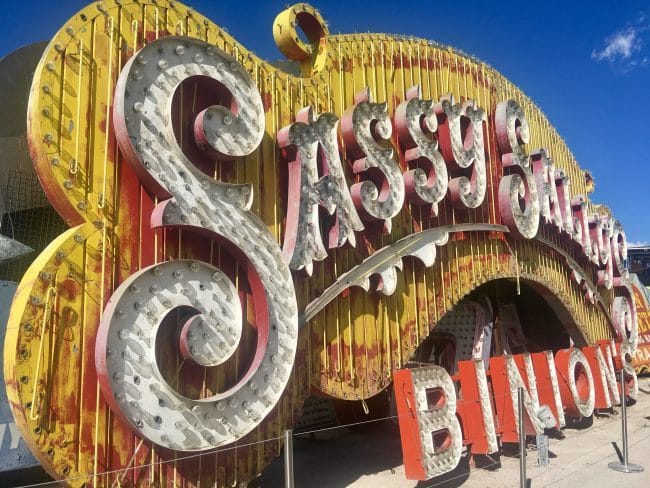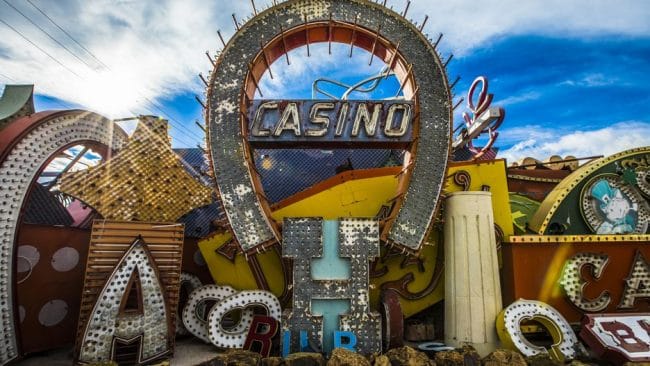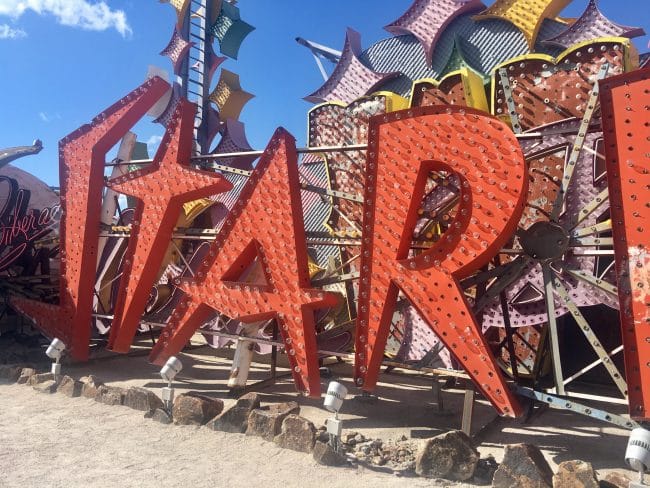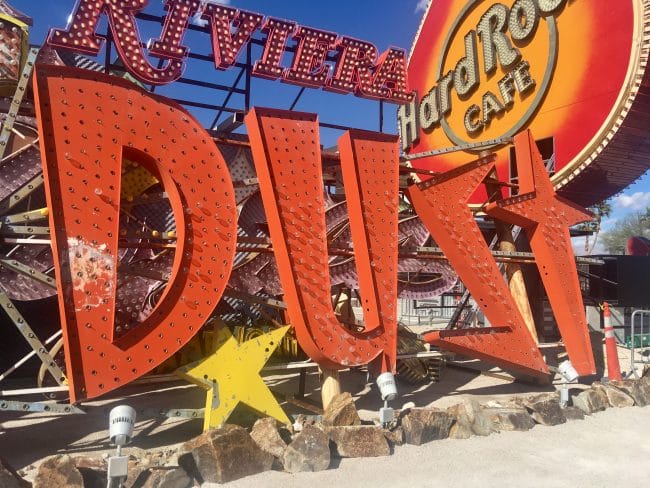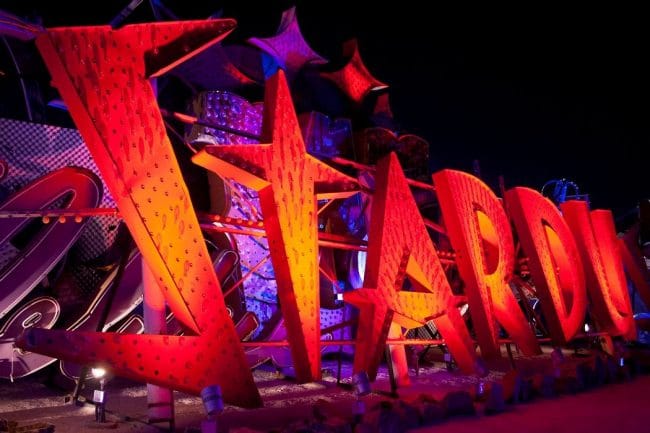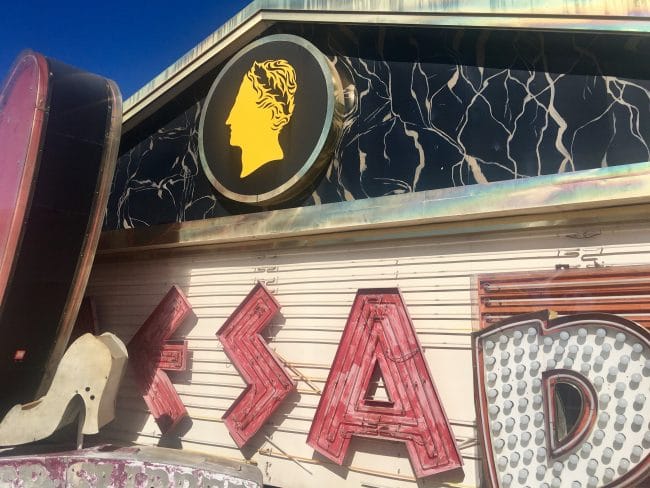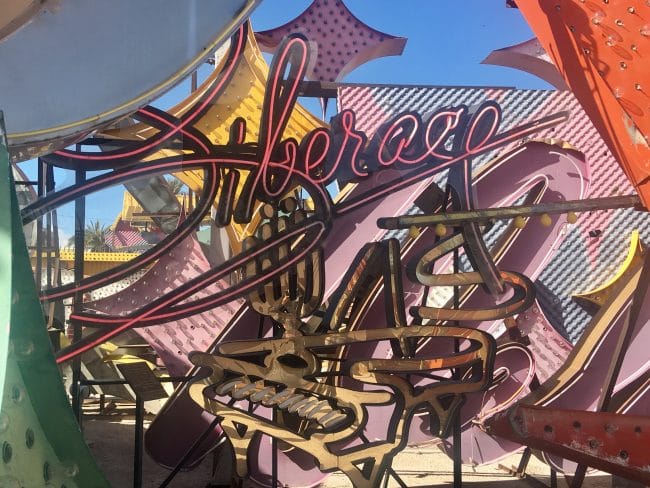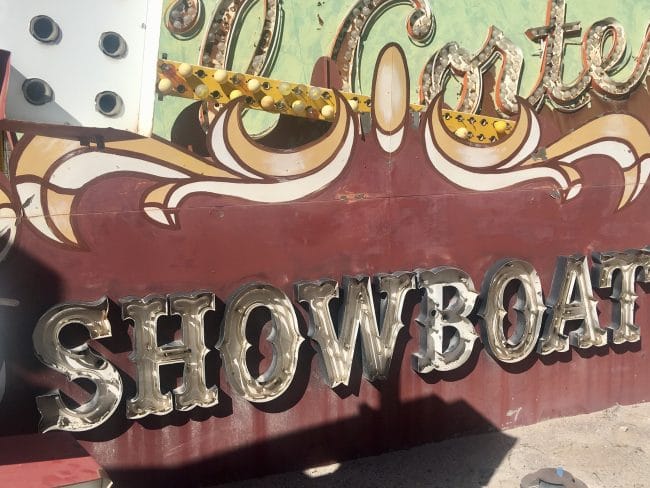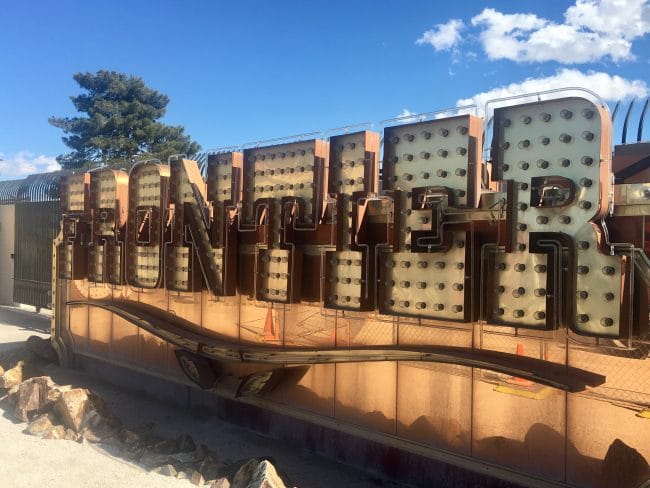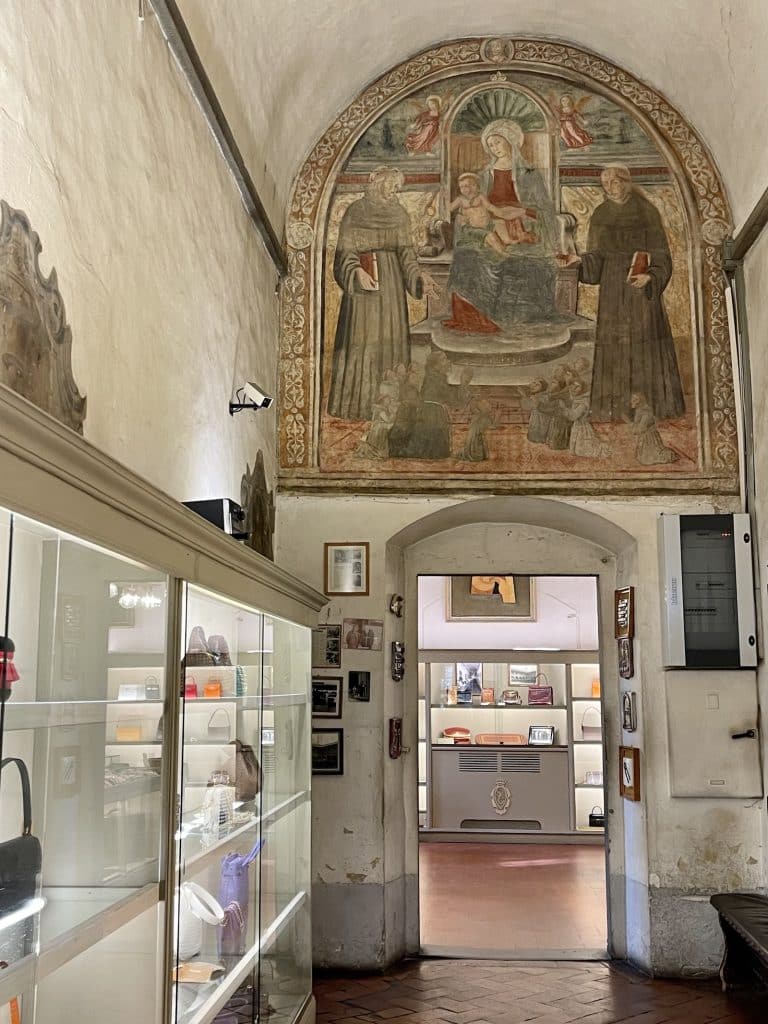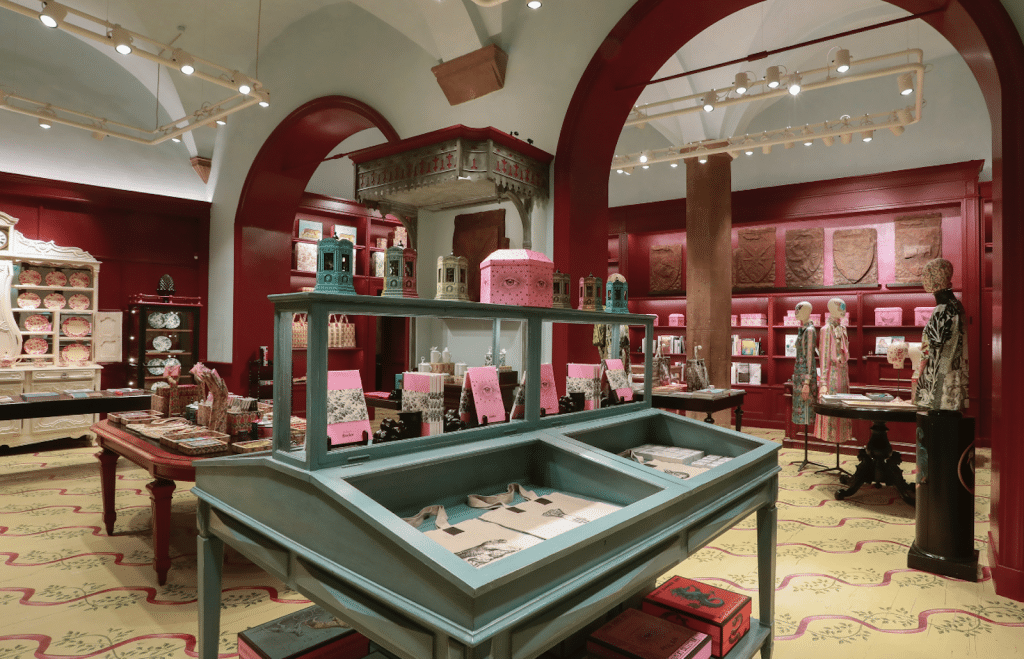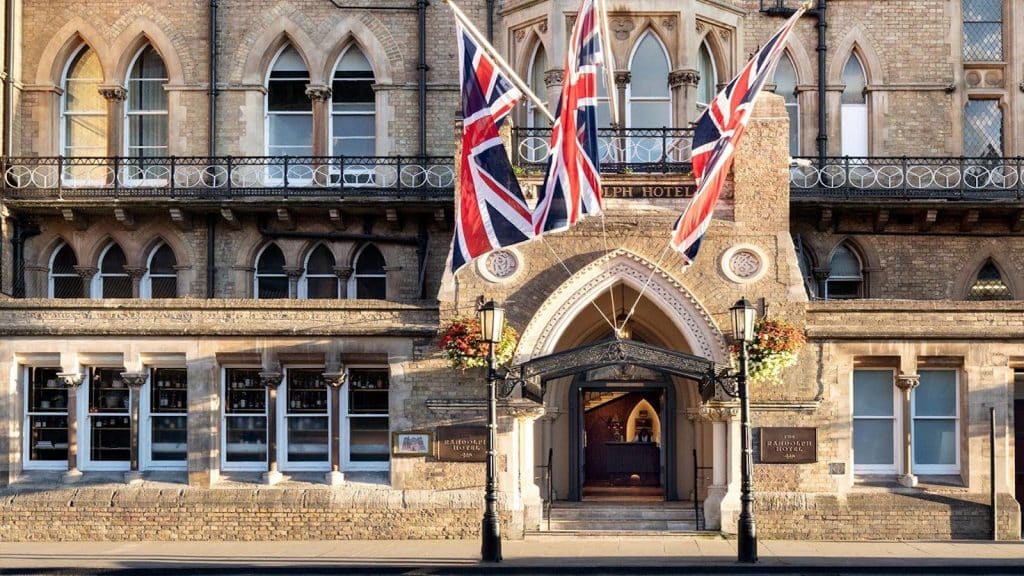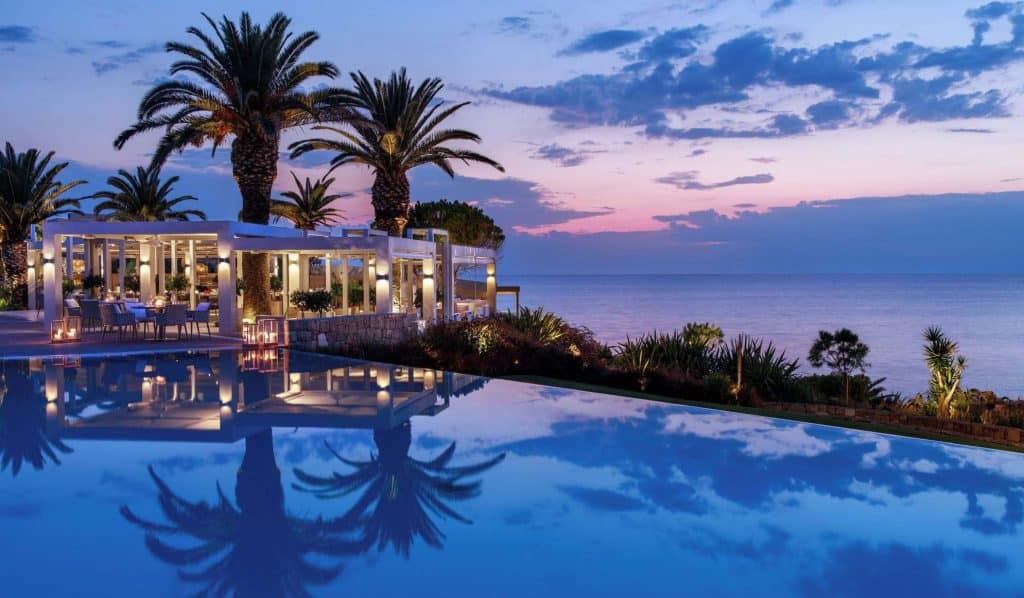Founded in 1996, the Neon Museum in Las Vegas is a nonprofit organisation dedicated to collecting, preserving, studying and exhibiting iconic Las Vegas signs that once glittered their way down the Strip. The staggering collection rages from signs that were made in the 1930s through to the present day. Each sign offers a unique story about the personalities who created it, what inspired the design, where it was made, and the role it played in Las Vegas’ history.
The two-acre The Neon Museum campus includes two outdoor exhibition spaces known as the Neon Boneyard and North Gallery. The museum also encompasses a visitors centre, housed inside the former La Concha Motel lobby, which is such a stunning piece of mid-century architecture design in itself. The lobby was designed by Paul Revere Williams, the first African American elected Fellow of the American Institute of Architects.
There are more than 100 signs at the The Neon Museum, and nine restored signs are also installed as public art throughout Las Vegas.
Obviously only the restored signs in The Neon Museum can be lit up to match their former glory. But the unrestored signs still look spectacular when light is shone upon them at night, so you still have an opportunity to see some of the signs illuminated to give you an idea of how spectacular they must have looked when fully operational.
At 188 feet, the truly magnificent Stardust sign was the tallest sign in the world back in 1968.
Caesars Palace was one of the first Las Vegas properties to incorporate a full-developed theme; its Greco-Roman design was present in every corner, from the fountains to the elegant rooms to the Corinthia columns that are currently the tallest in the world.
Between the 1950s and 1970s, Liberace was the highest-paid entertainer in the world, and one of the most famous Las Vegas entertainers of all time. This beautiful sign came from the Liberace Museum when it closed. The sign features his hand-written autograph, and is also one of the The Neon Museum’s full restored signs, transforming to a hot pink neon glow at night.
The showboat sign from the riverboat-themed casino opened in 1954 which was located at the intersection of Fremont Street and the Boulder Highway.
Elvis performed in Las Vegas for the first time at the Frontier in 1956. He was not well-received by audiences that first time, but he did make a lifelong friend in Liberace, who would influence his style and encourage him to finally return to Las Vegas in later years.
We thought we might feel sad seeing the once glittering neon rusting in the powerful Vegas sunlight, but this is not a place where neon goes to die. Far from it. On the contrary, it’s an uplifting experience, seeing these iconic signs that were rescued from historic casinos and hotels, brutally ceased with implosion. They sit proudly, still twinkling in the desert sunshine; a beacon to the memory of a shinier, more glamorous Las Vegas in its heyday.
For further information please visit: The Neon Museum,
CELLOPHANELAND* were guests of The Neon Museum, Las Vegas.
For our curated recommendations for Travel, Art, Culture, Design and Architecture books visit the CELLOPHANELAND* bookstore




